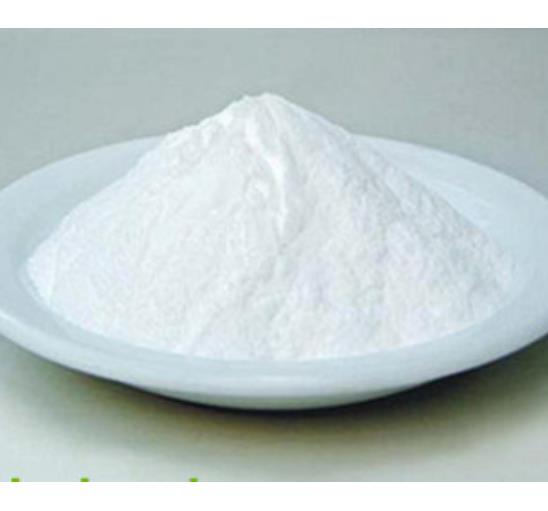Dapagliflozin: A Breakthrough in Diabetes Management and Beyond
May 23,2024
Introduction
Dapagliflozin, a novel drug in the burgeoning field of sodium-glucose cotransporter 2 (SGLT2) inhibitors, has emerged as a pivotal player in the management of type 2 diabetes mellitus. This article provides an in-depth analysis of dapagliflozin, focusing on its synthesis, composition, applications, and storage requirements. Developed to selectively inhibit the renal glucose reabsorption process, dapagliflozin represents a significant advancement over traditional diabetes treatments that primarily focus on insulin regulation. By diverting from conventional treatment paradigms, dapagliflozin offers a promising alternative that not only aids in glycemic control but also contributes to weight loss and blood pressure reduction. This comprehensive overview aims to elucidate the scientific and practical aspects of dapagliflozin, catering to professionals seeking detailed insight into its chemical properties and clinical benefits[1].

Figure 1 Characteristics of dapagliflozin
Synthesis of Dapagliflozin
The chemical synthesis of dapagliflozin is a testament to the advances in medicinal chemistry. The process begins with the derivation of the C-glycoside linkage, a critical step that enhances the drug's stability and efficacy. The synthesis involves multiple stages of selective glycosylation, protection, and deprotection steps, followed by the crucial incorporation of the thiophene ring through a meticulous coupling reaction. The final steps include a series of refinements to purify and confirm the structure of dapagliflozin via high-resolution chromatography and spectroscopy techniques.
Main Components
Dapagliflozin propanediol monohydrate is the active ingredient in dapagliflozin formulations. Its molecular structure includes a distinctive benzyl ring fused with a thiophene unit, linked to a glucose analog. This configuration allows dapagliflozin to selectively inhibit SGLT2, primarily located in the proximal renal tubules, thereby exerting its hypoglycemic effect by preventing glucose reabsorption and promoting its excretion via urine. The strategic placement of functional groups within its molecular architecture enhances its binding affinity and selectivity toward SGLT2 over other glucose transporters. This specificity not only increases the drug's efficacy but also minimizes side effects related to off-target interactions, making dapagliflozin a highly targeted therapeutic agent in the treatment of type 2 diabetes.
Applications
Dapagliflozin has revolutionized the therapeutic landscape of type 2 diabetes by offering an alternative mechanism of action compared to traditional antidiabetic drugs. Beyond its primary use in managing blood glucose levels, dapagliflozin has shown potential benefits in cardiovascular and renal health, making it a multifaceted agent in the chronic disease management spectrum. Its ability to reduce hospitalizations for heart failure and slow the progression of kidney disease underscores its impact beyond glycemic control. Ongoing research continues to explore additional therapeutic roles for dapagliflozin, including its efficacy in type 1 diabetes and its potential in weight management. Clinical trials are also investigating its effects on liver health, metabolic syndrome, and the risk factors associated with obesity, potentially broadening its applicability in managing various aspects of metabolic health.
Storage Methods
Proper storage of dapagliflozin is essential to maintain its efficacy and safety. The drug should be stored at room temperature, away from direct light and moisture. It is crucial to keep dapagliflozin in its original packaging until use to protect it from environmental variables. Stability studies indicate that when stored correctly, dapagliflozin retains its potency and safety profile for the duration of its recommended shelf life.
Conclusion
As the prevalence of type 2 diabetes escalates globally, dapagliflozin provides a crucial tool in the battle against this chronic condition. Its innovative mechanism of action, combined with the benefits observed in glucose regulation and potential cardiovascular protection, underscores the importance of dapagliflozin in diabetes care. The chemical synthesis and understanding of its storage and handling further enhance the drug's profile among healthcare professionals. As research evolves, dapagliflozin is poised to play an increasingly significant role in broader metabolic management, offering hope and improved quality of life to millions of individuals affected by diabetes and its complications[2].
References
[1]Dhillon S. Dapagliflozin: a review in type 2 diabetes[J]. Drugs, 2019, 79(10): 1135-1146.
[2] Plosker G L. Dapagliflozin: a review of its use in type 2 diabetes mellitus[J]. Drugs, 2012, 72: 2289-2312.
- Related articles
- Related Qustion
- A kind of preparation method of dapagliflozin Mar 11, 2022
This article describes a preparation method for dapagliflozin and an overview of its background
In the realm of organic chemistry, esters have always played a pivotal role due to their versatile applications across various industries.....
May 23,2024APIL-Leucine, a critical player in the biochemistry of life, stands out as one of the nine essential amino acids that humans must obtain through their diet.....
May 23,2024APIDapagliflozin
461432-26-8You may like
- Dapagliflozin
-

- $0.00 / 1Kg/Bag
- 2024-08-05
- CAS:461432-26-8
- Min. Order: 1Kg/Bag
- Purity: 99% min / GMP application / PMDA / DMF
- Supply Ability: 20 tons
- Dapagliflozin
-

- $0.00 / 25kg
- 2024-07-26
- CAS:461432-26-8
- Min. Order: 1kg
- Purity: 98% HPLC
- Supply Ability: 500 kgs
- Dapagliflozin
-

- $0.00 / 1Kg/Bag
- 2024-07-25
- CAS:461432-26-8
- Min. Order: 100g
- Purity: 99%min
- Supply Ability: 20kg




